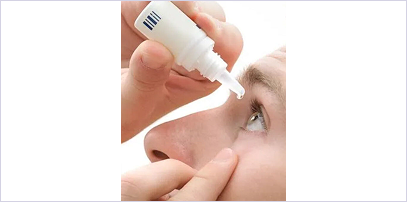
India is currently witnessing an outbreak of conjunctivitis, commonly known as ‘pink eye’, a contagious eye infection. Conjunctivitis, commonly referred to as pink eye, is a prevalent and highly contagious eye infection. It can arise from viral, bacterial, or allergen sources, leading to symptoms like redness, itching, and excessive tearing. While not typically severe, its rapid spread through direct contact and contaminated surfaces underscores the importance of prevention and proper management.
This contagious eye condition involves the inflammation of the conjunctiva, a thin membrane that covers the white part of the eye and the inner eyelids. Bacterial and viral conjunctivitis is contagious and often spreads while being in direct contact with an infected person’s bodily fluids, usually through hand-to-eye contact. People in crowded areas, offices and children are most likely to get pink eye.
Here are a few things to know about conjunctivitis.
Contagion and Spread
Conjunctivitis exhibits a remarkable capacity for contagion, persisting on surfaces such as doorknobs and towels. Insufficiently ventilated spaces further facilitate its transmission. During a conjunctivitis episode, avoiding touching surfaces after eye contact is essential, along with refraining from sharing personal items, such as towels and cosmetics, to thwart transmission.
Airborne Transmission: Recent research points to the possibility of conjunctivitis being transmitted through airborne particles. Respiratory droplets containing the virus, expelled when an infected individual coughs or sneezes, can lead to eye infections in others. Although not the primary mode of spread, practicing proper respiratory hygiene and wearing masks can diminish the risk of airborne transmission.
Symptoms of Conjunctivitis: Conjunctivitis manifests in various ways, including:
- Red or pink discoloration of the eyes
- Swelling of the conjunctiva and eyelids
- Excessive tear production
- Sensation of foreign bodies or a need to rub the eyes
- Itching, irritation, and burning
- Discharge (pus or mucus)
- Crusting of eyelids, especially in the morning
- Light sensitivity
Types of Conjunctivitis:
- Viral: Often accompanied by cold or flu symptoms, characterized by watery discharge, usually begins in one eye.
- Bacterial: Commonly results in pus-like discharge and eyelids sticking together, may occur alongside an ear infection.
- Allergic: Affects both eyes, intense itching, tearing, and swelling are typical, may coincide with general allergy symptoms.
- Irritant-Induced: Induces watery eyes and mucus discharge, often a response to irritants.
Prevention Strategies:
- Maintain Good Hygiene: Regular handwashing is pivotal, while personal items sharing should be avoided.
- Refrain from Eye Rubbing: Minimize contact with your eyes to prevent transferring germs.
- Use Protective Eyewear: In situations where eye exposure to irritants is likely, consider wearing goggles.
- Stay Away from Infected Individuals: Maintain a safe distance from those exhibiting conjunctivitis symptoms.
- Follow Contact Lens Care: Adhere to your eye doctor’s instructions for proper contact lens care.
Treatment Approach: : For accurate diagnosis and tailored treatment, consult an eye care professional. Treatment varies based on the type of conjunctivitis and its underlying cause.
- Viral Conjunctivitis: Typically self-resolving within 1-2 weeks, artificial tears and warm compresses offer symptom relief.
- Bacterial Conjunctivitis: Requires prescription antibiotic eye drops or ointments.
- Allergic Conjunctivitis: Minimize allergen exposure, antihistamine eye drops or oral medications may be recommended.
- Giant Papillary Conjunctivitis: Address underlying causes, possibly suspend contact lens usage, and manage inflammation with medications.
- Chemical Conjunctivitis: Rinse eyes with clean water to remove irritants, seek medical attention if irritation persists.
At-Home Care:
- Practice Hand Hygiene: Frequent handwashing is crucial. Refrain from sharing items like towels, washcloths, eye drops, or makeup.
- Warm or Cold Compresses: Provide relief and reduce swelling by applying clean, warm compresses or ice packs to closed eyes.
- Artificial Tears: Over-the-counter lubricating eye drops mitigate dryness and irritation.
- Avoid Eye Makeup: Temporarily forgo eye makeup use, as it can exacerbate irritation and potentially harbor bacteria.
- Remove Contact Lenses: Switch to wearing glasses if you typically use contact lenses until the infection clears.
- Clean Eyeglasses: Regularly clean glasses with mild soap and water to eliminate potential contaminants.
- Avoid Eye Touching or Rubbing: Minimize eye contact to prevent further irritation and potential spread of infection.
Effective prevention and management of conjunctivitis necessitate a combination of stringent hygiene practices, avoidance of irritants, and timely professional intervention. By adhering to these measures, the spread and discomfort associated with pink eye can be significantly mitigated.
References:
https://www.cdc.gov/conjunctivitis/about/symptoms.html
https://www.maxhealthcare.in/blogs/eye-flu-conjunctivitis
https://www.hindustantimes.com/lifestyle/health/conjunctivitis-alert-can-you-get-eye-flu-by-looking-into-someones-eyes-know-how-it-spreads-precautions-101690448292942.html https://www.apollo247.com/blog/article/eye-flu-cause-signs-treatment-prevention
Picture Credits:– MyDR
